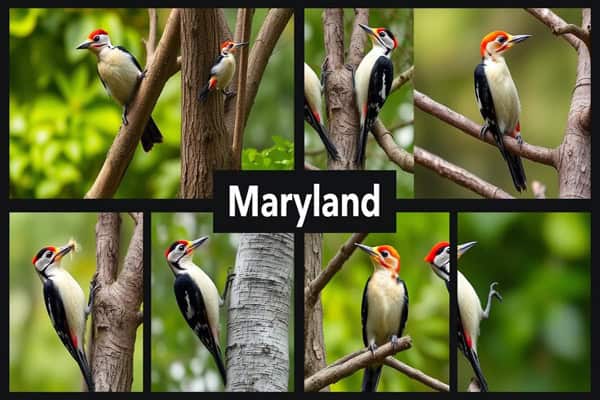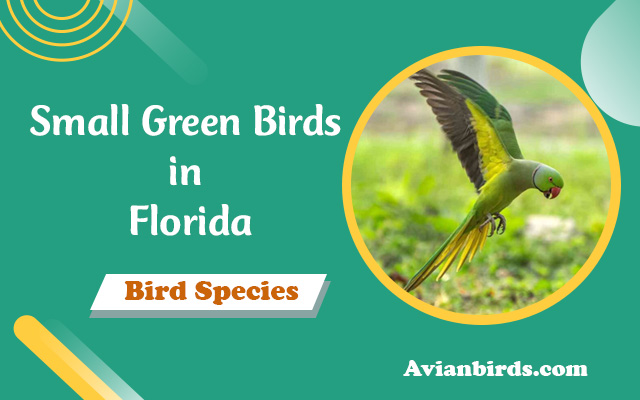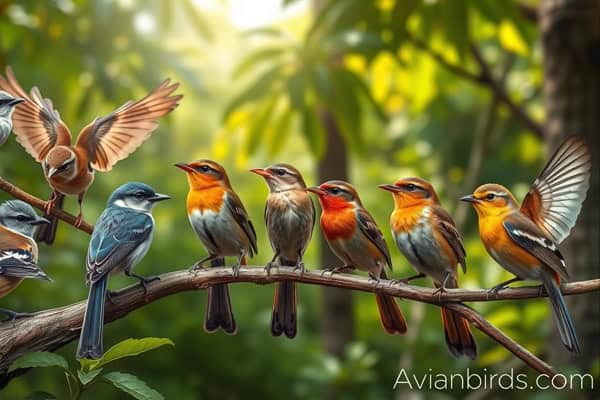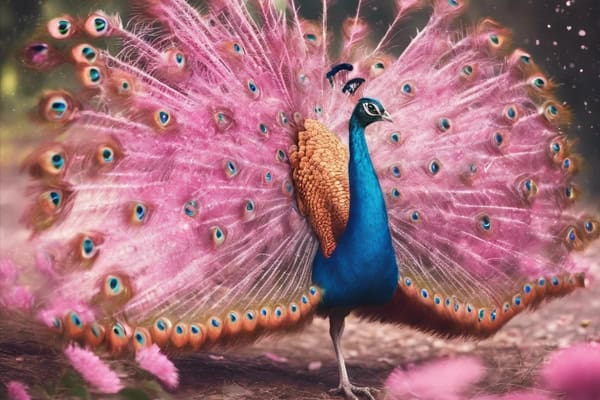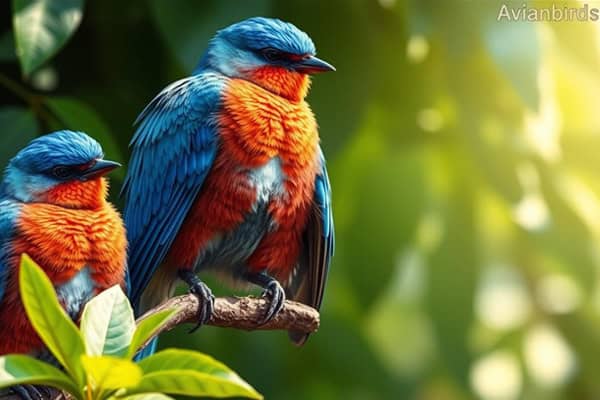11 Stunning Birds With Orange Beaks (With Photos)
In my research on Birds With Orange Beaks, I’ve found that vibrant hues often signal more than beauty. While tropical birds flaunt a rainbow of colors, even non-tropical regions host birds with vivid beaks.
These orange beaks aren’t just for show; they play roles in survival and mating. Surprisingly, such birds are widespread, proving that nature’s palette knows no bounds.
So, keep an eye out—you might spot these colorful creatures closer to home than you think.
Here We’ll learn 11 Different Types of Birds with Orange Beaks
1. Toco Toucan
- Scientific name: Ramphastos toco
- Size: 55 to 65 cm long (21 to 25 inches)
- Weight: 500 to 876 g (17 to 30 oz)
- Wingspan: 109 to 152 cm (43 to 60 in)
- Lifespan: 5 to 25 years
The Toco Toucan is a famous bird, often seen in movies. It’s known for its big bill, which helps it eat fruits and berries that are hard to reach.
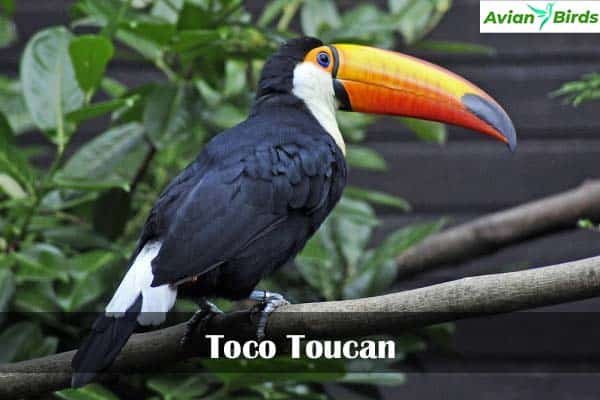
This bill can be as long as 23 cm—that’s about the length of a ruler! The bill has a bright red-orange bottom and a lighter yellow-orange top, with a big black spot at the end.
But the cool thing is, the toucan’s bill isn’t just for looks. It helps the bird stay cool in hot weather by releasing extra body heat. This is super helpful for the toucan to survive in its warm home.
2. Northern Cardinal
- Scientific name: Cardinalis cardinalis
- Size: 21 to 23.5 cm long (8.3–9.3 in)
- Weight: 33.6 to 65 g (1.19–2.29 oz)
- Wingspan: 25 to 31 cm (9.8–12.2 in)
- Lifespan: 3 to 5 years
- Conservation Status: Not a concern
The Northern Cardinal is a favorite across North America, proudly representing seven states. Known for their distinctive orange beaks, the males boast a striking red with a black mask, while females wear brown with hints of pink. Both share the iconic orange bill.

Also, These birds love visiting feeders, which helps their numbers grow. They symbolize love, forming strong bonds and caring for their young long after they leave the nest.
It’s clear why so many people adore these colorful birds.
3. Atlantic Puffin
- Scientific name: Fratercula arctica
- Length: 28 to 30 cm
- Weight: 309 to 549 g
- Wingspan: 47 to 63 cm
- Lifespan: 3-25 years
- Conservation Status: Vulnerable
The Atlantic Puffin stands out with its orange-striped bill and is famous among puffins.
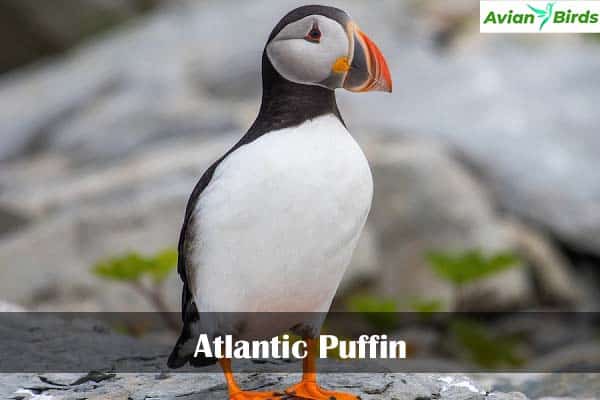
It’s a strong bird that’s great at diving for fish. Their bills are not just colorful but also powerful. You’ll find most of these puffins in Europe, living together in big groups by the sea.
They’re known for being loud and social. While some places consider puffins a tasty treat because of their fat, many people love them for their adorable looks and fun personalities.
4. Variable Oystercatcher
- Scientific name: Haematopus unicolor
- Length: 42 to 47 cm
- Weight: 678 to 724 g
- Wingspan: 72 to 91 cm
- Lifespan: 4-10 years
- Conservation Status: Least Concern
The Variable Oystercatcher is a cool bird that stands out with its orange bill and long, skinny legs.

Most of them are all black, but some have black and white feathers. They have the same orange color on their beaks and legs.
These birds are only found in New Zealand, hanging out by the shore. They like to stay in one place all year, not moving around much.
5. Australian Zebra Finch
- Scientific name: Taeniopygia castanotis
- Length: 10 to 11 cm
- Weight: 15 to 30 g
- Wingspan: 20 to 22 cm
- Lifespan: 3-12 years
- Conservation Status: Least Concern
The Zebra Finch is a common bird in Central Australia and a favorite pet. They’re named for their striped heads, like a zebra’s. They have a pretty orange beak—boys’ beaks are brighter, and girls’ are softer. People aren’t sure why they have orange beaks. Do you know about African Finches? If not, then you must explore them.
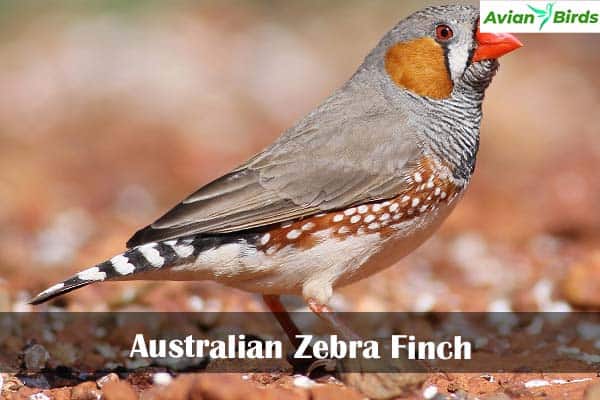
These birds with orange beaks are friendly pets that chirp sweetly and play well with other birds if they have enough space. Breeders have even made new colors of Zebra Finches, like pied or cinnamon.
6. American White Pelican
- Scientific name: Pelecanus erythrorhynchos
- Length: 130 to 180 cm
- Weight: 3.5 to 13.6 kg
- Wingspan: 240 to 300 cm
- Lifespan: 8 – 30 years
- Conservation Status: Least Concern
The American White Pelican is a big, white bird with a huge orange bill. It’s one of the biggest birds around and doesn’t need to hide from many enemies.

Its bill isn’t just big; it has a pouch for catching lots of fish—over four pounds every day! They catch fish by swimming, not diving. What’s really smart is that they fish together in groups, which helps them catch more fish.
So, these pelicans are not only big and bright but also clever at getting their food.
7. Black Oystercatcher
- Scientific name: Haematopus bachmani
- Length: 38 to 180 cm
- Weight: 907 to 1360 g
- Wingspan: 71 to 91 cm
- Lifespan: 4 – 8 years
- Conservation Status: Least Concern
The Black Oystercatcher is a striking bird, all black with a bill that’s a vivid orange or red. It has an orange eye ring and yellow eyes, making it stand out. These birds love the rocky shores of North America’s west coast.
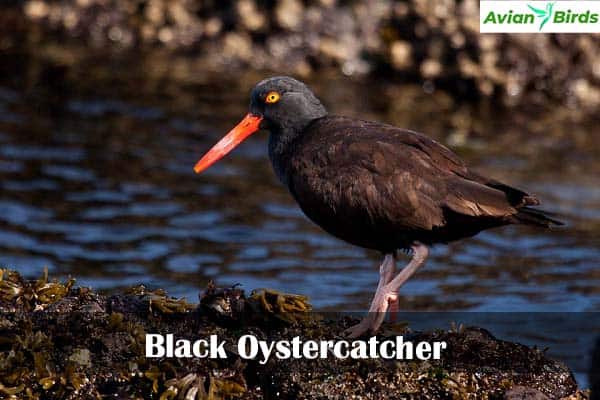
Their bill is not just for looks; it’s a tool they use to open mussel shells and get food from rocks.
8. Crested Auklet
- Scientific name: Aethia cristatella
- Length: 18 to 27 cm
- Weight: 195 to 330 g
- Wingspan: 34 to 50 cm
- Lifespan: 4 – 8 years
- Conservation Status: Least Concern
The Crested Auklet is a tiny seabird with a family that includes puffins. Its beak changes from dull yellow in winter to bright orange during breeding season.
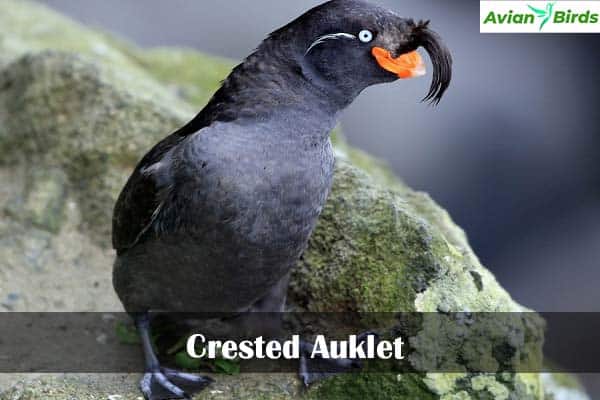
What’s cool is that it smells like citrus, which helps it make friends with other auklets. These birds are super social and hang out in huge groups, sometimes a million strong!
They might be small, but they’re mighty interesting, especially with their tangerine scent and love for tiny snacks like krill which makes these birds with orange beaks very impressive.
9. African Skimmer
- Scientific name: Rynchops flavirostris
- Length: 36 to 42 cm
- Weight: 111 to 204 g
- Wingspan: 106 cm
- Lifespan: 4 – 8 years
- Conservation Status: Least Concern
The African Skimmer has a beak that’s not just orange with a yellow tip, but also uniquely shaped. It’s longer on the bottom and flat, making it look like scissors.

This bird hunts especially: it flies with its mouth open, skimming the water until it feels a fish, then quickly snaps its beak shut.
Besides its beak, it has long wings and a short tail, and its legs are bright red, adding to its distinctive look. I recommend you to read about African Fish Eagle
Check Our Previous Articles:
10. Royal Tern
- Scientific name: Thalasseus maximus
- Length: 45 to 50 cm
- Weight: 350 to 450 g
- Wingspan: 125 to 135 cm
- Conservation Status: Least Concern
The Royal Tern is a large seabird from the Americas, sometimes seen in Europe. It’s known for its orange-red bill.
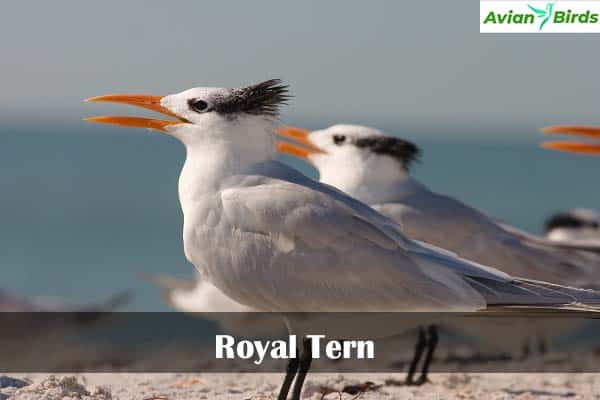
Adult terns are mostly safe from predators, but their chicks are not. It takes them four years to grow up.
Both young and adult terns can get caught in fishing nets. They like quiet places like mangroves more than busy beaches. Fish is their main food, but they also eat things like crabs and shrimp.
11. Grey-headed Gull
- Scientific name: Chroicocephalus cirrocephalus
- Length: 42 cm (16.5 in)
- Weight: 190 to 400 g
- Wingspan: 94 to 110 cm
- Lifespan: 10 to 30 years
- Conservation Status: Least Concern
Gulls might be known for stealing snacks at the beach, but there’s a small gull species that’s hard to overlook.
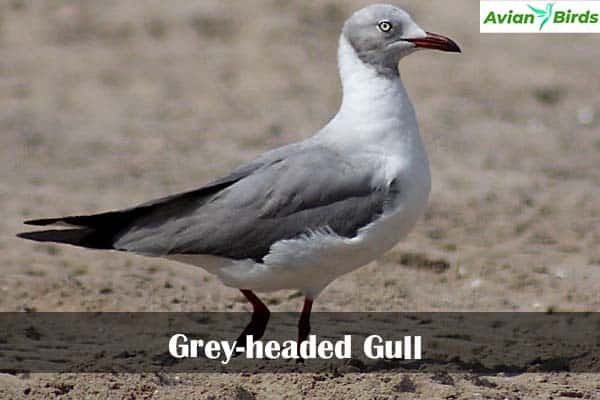
They have a unique gray color with black wingtips and stand out with their red-orange bill and feet.
These gulls gather in big, noisy groups, and sometimes you can see flocks of them in the thousands, especially when there’s plenty of food around.

Other birds, such as the Baltimore Oriole, do not have orange beaks, but they have a bright orange color on their chest, shoulders, and abdomen. If you like all kinds of orange birds, you can set up related wallpapers, pick Custom Keychains, or create paintings to put your interests into practice.
Final Thoughts on Birds with Orange Beaks
Birds with orange bills really catch the eye, don’t they? They’re not just in the tropics; even in American suburbs, you might see a Northern Cardinal showing off its orange beak.
It’s interesting how in some bird species, like the Eclectus parrot, males and females have different beak colors. The male parrot has a green body with an orange beak, while the female is red with a black beak.
Furthermore, We might not know all the reasons why birds have such bright colors, but they sure make it easier for us to spot these beautiful creatures when we’re out and about.


